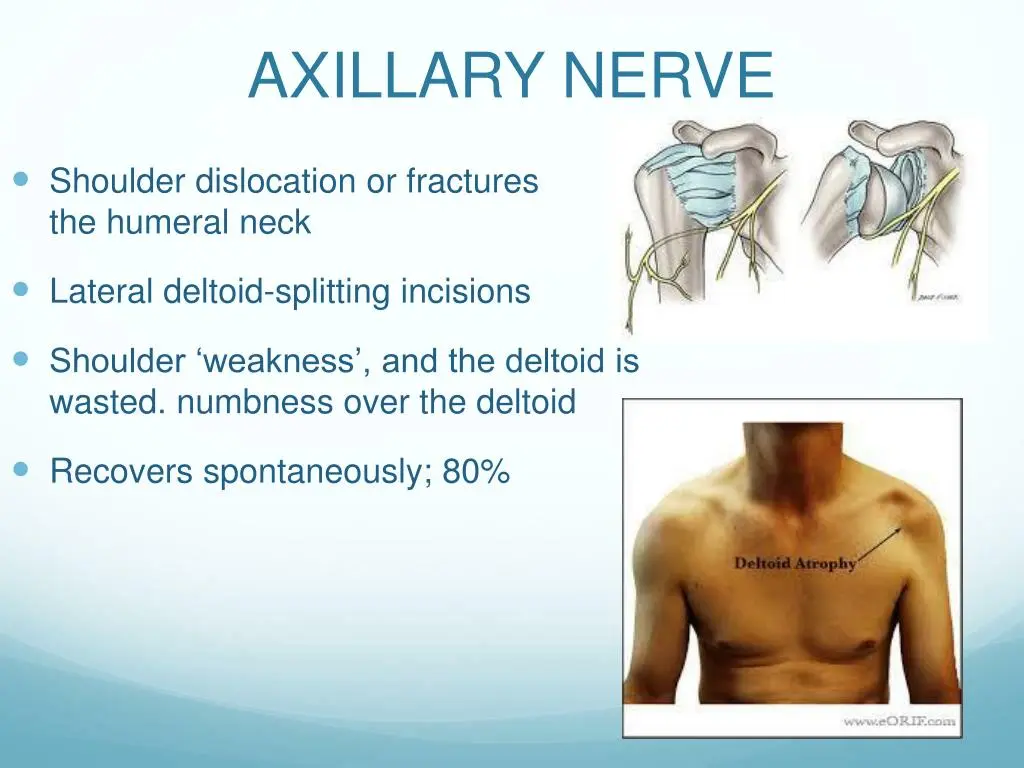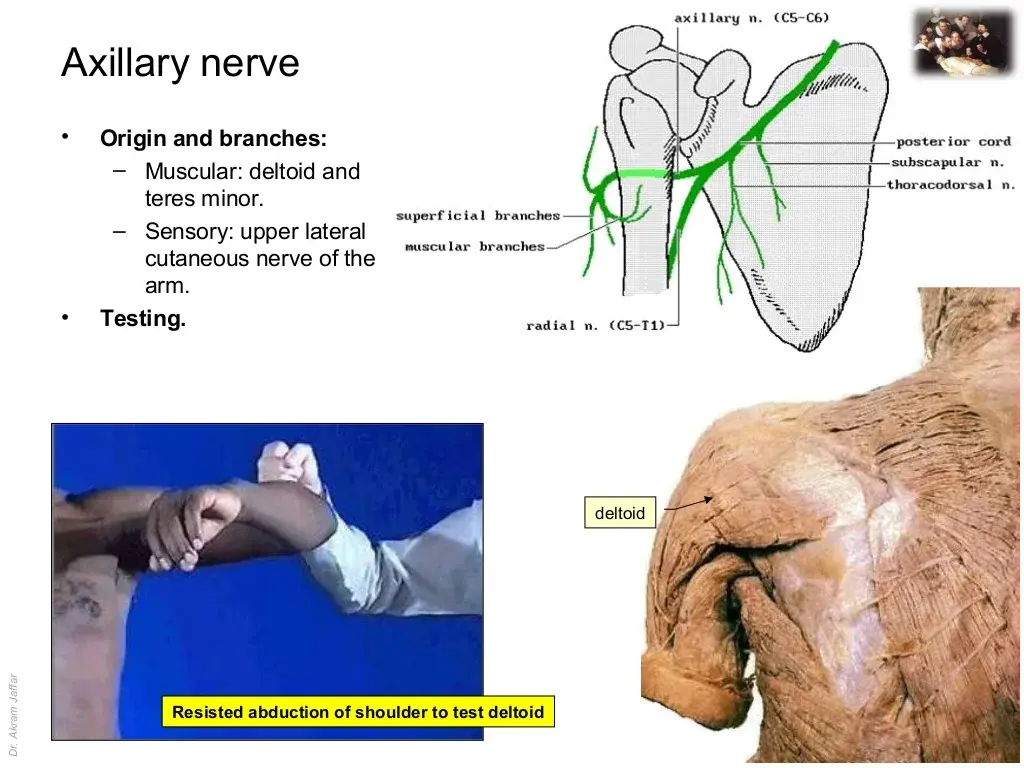Can Axillary Nerve Dysfunction be Cured?
Yes
Depends on the cause; some cases may improve with appropriate treatment

What is Axillary Nerve Dysfunction?
Axillary nerve dysfunction refers to impairment or damage to the axillary nerve, leading to weakness or paralysis of the shoulder muscles. Causes may include trauma or compression. Treatment depends on the underlying cause.

Clinical Aspects

Characteristics
Impaired function of the axillary nerve

Symptoms
Shoulder weakness, pain, numbness

Diagnosis
Clinical evaluation, imaging studies, assessment of muscle function

Prognosis
Generally good with appropriate treatment

Complications
Shoulder weakness, impaired range of motion
Etiology and Treatment

Causes
Trauma, compression, surgical procedures

Treatments
Physical therapy, pain management, surgical intervention

Prevention
Physical therapy, pain management, surgical intervention
Public Health and Patient Perspectives

Epidemiology
Dysfunction of the axillary nerve, often due to injury or compression

Patient Perspectives
Rehabilitation exercises, sometimes surgical intervention
This information aims to provide a general understanding of the subject matter, but individual circumstances can vary significantly. Please remember to consult with healthcare professionals for personalized advice and guidance.
Share: